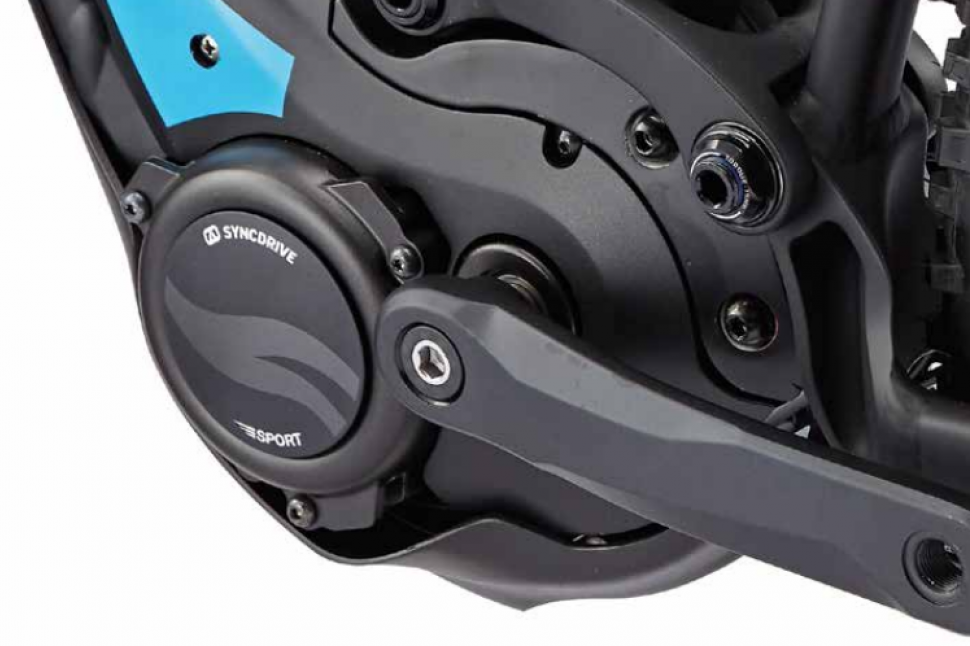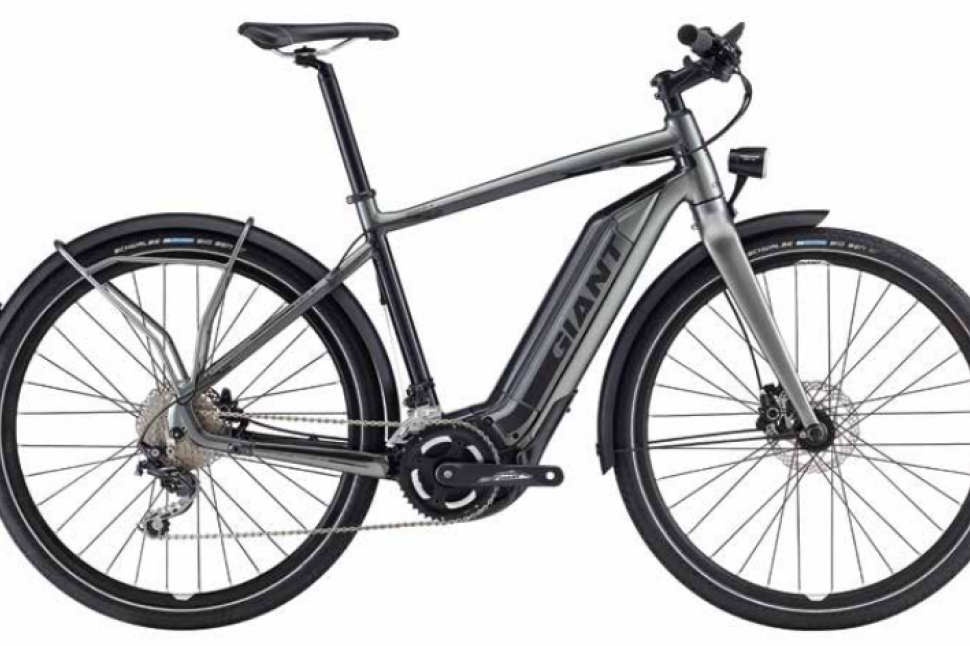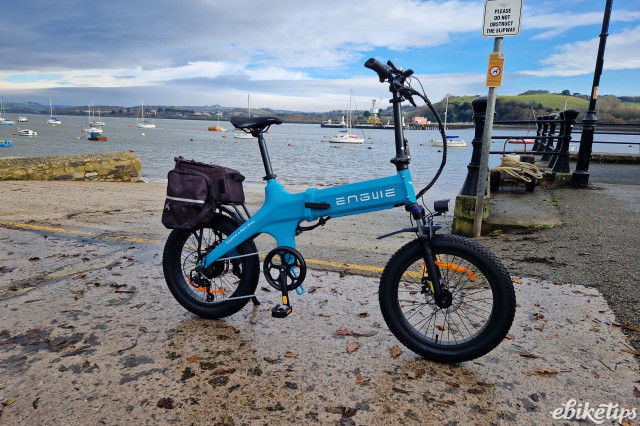Taiwanese bicycle manufacturer Giant has announced that it is updating its e-bike range in 2017 - featuring models designed for the road and the trail - as part of their new Hybrid Cycling Technology range.
The selection, which Giant is calling its most comprehensive range of e-bikes to date, includes updates to its flagship Full-E+ trial e-bike, as well as three other models expected for release this year.
That's not all. As part of the introduction to Giant's Hybrid Cycling Technology range, the Taiwan bike manufacturer has introduced a six-type range to provide accessible riding options to every type of rider.
That six bike range includes the Quick-E+ mobility range, the Prime E+ suburban recreation range, the Road-E+ road range, the Explore E+ trekking range, the Dirt-E+ cross country range, and the Full-E+ trail riding range.
Each model in each range will be made up of a selection of Giant's e-bike technology, including a Yamaha SyncDrive mid-drive motor, Giant's PedalPlus power assistance sensors, an Li-ion EnergyPak battery and a Giant RideControl handlebar interface.
Giant's new technology
As we've already mentioned, all of the bikes in Giant's e-bike range will feature a combination of Giant's new range of e-bike technologies. Here's the breakdown:
Giant's choice of mid-drive motor, the heart of any e-bike, is Yamaha's SyncDrive motor which produces up to 80Nm of torque. The motor includes instant repsonse technology which will ensure you never feel like you're using your own strength to get things moving.
The system's proportional power delivey system will also keep the power distribution smooth and even, leaving every power assisted ride feeling like a totally human powered one.
The PedalPlus 4-sensor technology keeps track of exactly how much force you are applying to the pedals at any given moment to ensure that any assistance the motor gives you feels natural.
It's the torque sensor that gets things moving effectively. It recognises how much pressure you're putting on the pedals, so that the motor can deliver its seamless power boost.
The speed sensor keeps track of how fast you're travelling, and the motor and pedal rotation sensors make sure the motor is running as smoothly, efficiently and as quietly as possible.
Giant's EnergyPak batteries have the highest energy density of any e-bikes in their category and they charge twice as the Taiwanese company's earlier battery systems.
The batteries are integrated seamlessly into the frames of the Giant e-bike range, which helps stabalise the bicycle while also making the full e-bike range look like normal lithe lightweight bicycles.
You'll be able to eek out a maximum range of 200km from one of Giant's EnergyPak batteries which come in 300Wh, 400Wh, and 500Wh models.
The RideControl interface is the control centre for all of your electricity assisted riding needs, and is Giant's answer to Bosch's Nyon interface system.
Ergonomic controls, USB charging options for unlimited Garmin-ing or even some phone charging, and an intelligent walk assist mode - to help you when you're walking the potentially heavy bikes around - are all features of the RideControl kit.
Equally you'll be able to monitor the battery levels of your system, and choose what level of peddal assistance you require.
There are three options: Eco, Normal, and Power. As you'd expect Eco is for moments when you don't need much power - when you're cruising through an urban area, or you want to travel a long distance on a ride. Normal's good for hills and undulating country roads, and Power will give you a boost if you're running against the clock, or there's a particularly steep mountain in your way.
>Bosch announces dual battery setup + upgraded Nyon interface
Which e-bike is which?
While we listed six e-bike ranges, Giant only lists four as available for 2017 - the Quick-E+ urban bike, the Road-E+ road bike, the Dirt-E+ cross country bike, and the Full-E+ flagship trail e-bike range.
We've asked Giant for their anticipated UK pricing on the full range, and will update the missing prices within this article as soon as that information is in our hands.
If we follow the list we made above, and start with the urban models through to the off-roaders the first bike you'll meet today is the Giant Quick-E+.
Quick-E+
Giant's e-bike answer to inner-city transportation, their Quick-E+ bike has an ALUXX SL aluminium frame, a top speed of 45km/h and a relatively upright riding position for added stability.
It's the perfect solution to riders who are inner-city commuters looking to replace their car, or riders who are after a little bit of assistance in managing their enormous commute.
>ebiketips's guide to electric city bikes
Road-E+
Road-E+1: £2749
Road-E+2: £2299
We've already seen what a little bit of electronic assistance can do for professional riders in the pro peloton - sure it was illegal - but bringing that advantage to your daily riding experience is now easier than ever, thanks to Giant.
Their 2017 road e-bike range is set to come in two models. Originally launched in April 2016, Giant's road e-bike originally used the same Yamaha mid-drive motor and battery unit that started out exclusively belonging to the flagship Full-E+ bike. Those faculties have now been shared across the full range of e-bikes, the Road-E+ bikes included.
2017's incarnation, or should we say incarnations as it comes in two models the E+1 and the E+2, also use the Yamaha motor mentioned above, attached to an ALUXX SL Aluminium frameset.
The E+1 model will run a combination of Shimano's Ultegra and 105 components and Shimano's RS685/785 hydraulic disc brakes, while the E+2 features full Tiagra and TRP Spyre break calipers.
Dirt-E+
Planning on tackling the toughest terrain? Look no further, in this range at least, than the Dirt-E+.
Overlooking its predictably bizarre naming combination, the Dirt-E+ (or Dirty-Plus) is especially designed to handle the extra steep and rocky off-roady bits we all love.
The aluminium frame is designed with stability in mind, and Giant say that this model features the 'highest' motor torque, to make tackling those steep sections even easier.
There's even a double chainring which should add even more torque to the set up.
Full-E+
Pricing to be confirmed on Full-E+ 0 SX, Full-E+ 1, & Full-E+ 2 models.
Here's where the magic really happens. The main event in Giant's e-bike range is their longest serving member, the Full-E.
The 2017 iteration of the bike has, like the rest of the range, had a '+' added to its name.
Obviously that's not all. Integration has been a buzword throughout Giant's range launch, and that's no different here. The battery pack in the Full-E+ is far more subtly integrated into the 2017 range's ALUXX SL frame than any of its predecessors' batteries were.
The real thing to shout about is the implementation of Giant's Maestro Suspension system. Offering 140mm in rear suspension, and 140mm-160mm (in certain models) of front suspension. The Maestro system is designed to take bigger hits than any Giant-associated suspension system has before, while giving you a smoother ride via forged composte linkages.
In the top-end Full-E+ 0 SX model the Yamaha SyncDrive motor - which'll give you an output of 250W and 80Nm of torque - syncs up beautifully with SRAM's special e-bike EX1 groupset, while DT Swiss's 27.5in wheels'll give the Maestro suspension a hand.
The Full-E+ range also comes in cheaper 1 and 2 models featuring Shimano SLX and Shimano Deore groupsets respectively.
Suspension-wise the cheaper models differ too. The 1 will be carrying Fox suspension, while the 2 uses Suntour to ease the ride.











